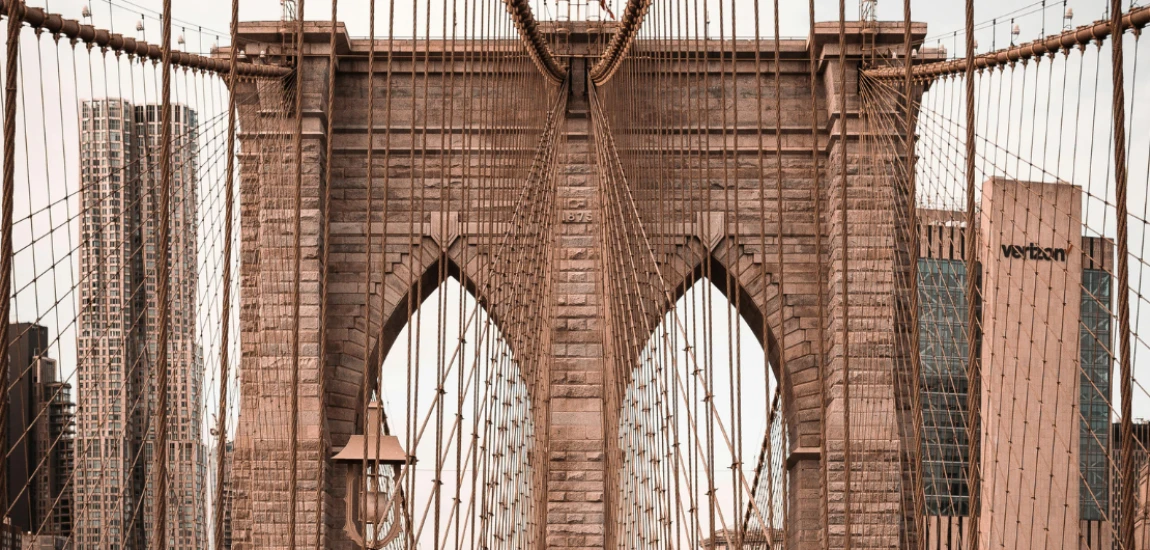Bridges That Were Built for Something Else Entirely

When you picture a bridge, you probably think of something designed to carry cars, trains, or pedestrians from point A to point B. But some of the world’s most fascinating bridges weren’t built for that purpose at all.
These are the bridges that were built for something else entirely — structures originally created to move water, transport goods, or carry industrial infrastructure, later reimagined for new uses. From ancient aqueducts turned into scenic footpaths to disused railway viaducts transformed into cycling trails, these bridges prove that history, engineering, and creativity can combine in extraordinary ways.
From Aqueducts to Avenues
Aqueducts are some of the oldest “bridges” in human history — originally designed to carry water across valleys and uneven terrain. Today, several have been repurposed into pedestrian walkways, allowing visitors to experience their grandeur up close.
Pont du Gard, France
This UNESCO World Heritage Site, built by the Romans in the first century AD, once carried water over the Gardon River. While it no longer functions as an aqueduct, it now serves as a pedestrian bridge, offering breathtaking views of the surrounding countryside.
Aqueduct of Segovia, Spain
One of the best-preserved Roman aqueducts, it no longer transports water but stands as a majestic public monument. Visitors can stroll around and even along certain sections, tracing the path water once took into the city.
Eifel Aqueduct, Germany
Though in ruins, sections of this ancient aqueduct have been integrated into hiking routes, giving walkers a tangible connection to Roman engineering.
Travel Tip: Many aqueduct bridges are UNESCO-listed heritage sites, so wear comfortable shoes and allow extra time to explore the surrounding historic districts.

Railway Viaducts Turned Pedestrian Trails
As rail networks evolved and certain lines fell into disuse, many impressive railway viaducts were left standing without trains. Instead of demolishing them, cities and conservation groups have transformed these bridges into walkways and cycling routes.
High Line, New York City, USA
Once an elevated freight railway line, the High Line is now one of Manhattan’s most beloved parks. Lined with gardens, art installations, and seating areas, it offers a unique perspective of the city’s west side.
Viaduc des Arts, Paris, France
Formerly a railway viaduct, this Paris landmark now houses artisan workshops beneath its arches, while the top level has been converted into the Promenade Plantée, a leafy pedestrian pathway.
Monsal Trail Viaducts, Derbyshire, England
The Monsal Trail follows a former railway line through the Peak District, crossing historic viaducts that now carry walkers and cyclists over river valleys.
Travel Tip: Many converted railway bridges are part of longer trails — plan your route so you can enjoy both the bridge and the surrounding landscape.

Industrial Infrastructure Reimagined
Not all bridges were built for people or even trains — some started life as industrial infrastructure like pipelines, conveyors, or service routes. Repurposing them has given cities new public spaces with unexpected charm.
Gas Works Bridge, Oxford, England
Originally built to carry a gas main across the River Thames, this narrow bridge is now a pedestrian crossing linking two parts of the city’s riverside path.
The Pipeline Bridge, Squamish, Canada
Once used to carry a water pipeline across the Squamish River, this bridge is now a popular spot for hikers and photographers, offering sweeping mountain views.
The Conveyor Belt Bridge, Essen, Germany
Part of the Ruhr’s industrial heritage, a former conveyor belt structure has been adapted for guided tours, giving visitors a literal walk through the region’s mining past.
Travel Tip: Some industrial bridges may have limited access or require guided tours — check opening hours before visiting.

Bridges That Became Cultural Icons
In some cases, a bridge’s second life has made it even more famous than its first. These structures weren’t just repurposed; they were reimagined as community spaces, art venues, and tourist attractions.
Puente de San Martín, Toledo, Spain
Originally part of Toledo’s defensive network, this medieval bridge has been adapted for modern tourism, with guided walks and zip lines giving visitors unique ways to experience it.
Ponte Vecchio, Florence, Italy
While it has always been a bridge, the Ponte Vecchio was once lined with butchers’ shops. Today, it’s filled with jewelers and artisans, making it as much a marketplace as a crossing.
Cavenagh Bridge, Singapore
Built as a drawbridge for ships in the 19th century, it’s now a pedestrian bridge adorned with decorative lighting, becoming a romantic evening stroll spot in the city.

Why Repurposing Bridges Matters
Repurposing old bridges isn’t just about saving money or preserving history — it’s about redefining urban spaces and making heritage accessible.
Sustainability: Reusing existing structures reduces the environmental impact compared to building new ones.
Cultural Preservation: It keeps historical engineering marvels alive for future generations.
Community Engagement: Bridges can become public parks, walking trails, or cultural venues.
Tourism Boost: Unique bridges attract travelers looking for unusual, Instagram-worthy experiences.
Cities from Seoul to Sydney have realized that reimagining infrastructure can bring both economic and cultural value.

Tips for Visiting Repurposed Bridges
Research Access Rules: Some are free to visit; others require tickets.
Time Your Visit: Early morning or late afternoon often offers the best light for photography.
Look for Events: Many urban repurposed bridges host seasonal markets, art exhibits, or concerts.
Wear Good Shoes: You might end up walking more than you expect — and on uneven surfaces.
Explore the Surroundings: These bridges often connect to neighborhoods worth exploring.

Famous Examples to Add to Your Travel List
If you’re ready to explore bridges that were built for something else entirely, here are a few must-visit spots:
Pont du Gard, France – Roman aqueduct turned walking bridge.
High Line, USA – Elevated railway reborn as an urban park.
Promenade Plantée, France – Garden walkway atop a viaduct.
Monsal Trail Viaducts, UK – Scenic cycling route over historic bridges.
Pipeline Bridge, Canada – Industrial river crossing turned hiking landmark.
Gas Works Bridge, England – Gas pipeline bridge now for pedestrians.
Ponte Vecchio, Italy – Medieval crossing turned artisan marketplace.





